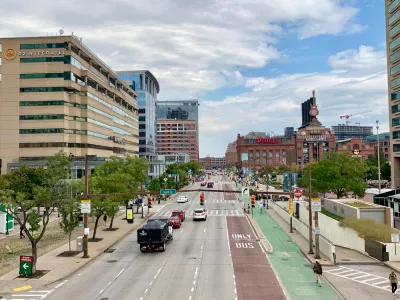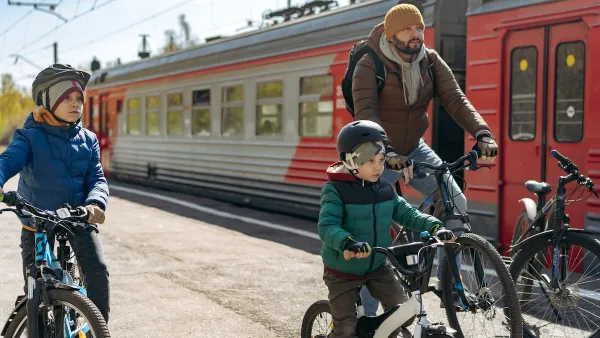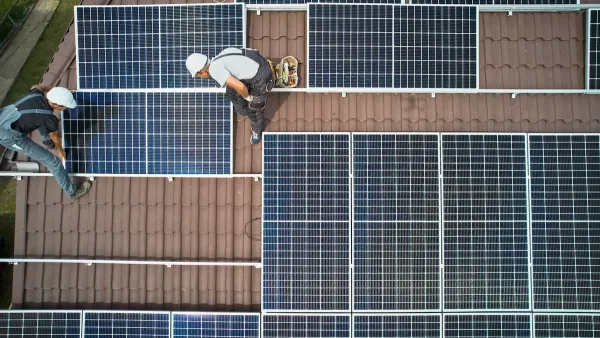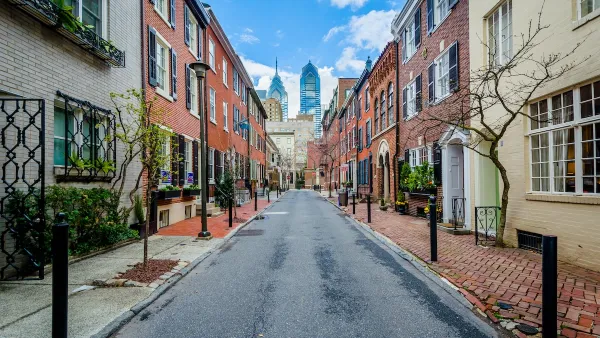Neighborhoods of color are often more dangerous for pedestrians and cyclists, but they are also often left behind when local officials redesign streets to make them safer. How can we change this?

Baltimore bike lovers’ efforts to complete an extended network of protected bike lanes took a hit this summer.
City officials constructed the two-mile long, east-west portion of the route along East Monument Street, directly past Fountain Baptist Church. This is a largely Black area of the city where, according to census data, more than half of the population lives below the poverty line and most residents do not own a car.
After church leaders cried foul because they lost some on-street parking spots, the city removed a portion of the lane, redirecting southbound bike users to the sidewalk, over the objections of bike advocates who said that made the lane less safe.
The Fountain Baptist Church flap illustrates a problem plaguing communities nationwide. Neighborhoods with less affluence and with more people of color are often more dangerous for pedestrians and cyclists, but they are also often left out of the planning and design phases when local governments decide to redesign streets to make them safer for everyone. In the Baltimore case, the politically powerful church leaders exerted more influence than Complete Streets advocates.
Advocates for safer sidewalks and roadways say there are numerous reasons why marginalized communities would get a raw deal when it comes to Complete Streets, the increasingly popular transportation policy approach that envisions roadways that are designed to be safer for drivers, cyclists, and pedestrians.
Adonia Lugo, an urban anthropologist and board co-chair of Los Angeles-based People for Mobility Justice, says a major problem with the Complete Streets philosophy is that it’s focused on redesigning neighborhoods often with little or cursory input from the people who live in them.
”It’s just a reflection of the broader reality that a lot of times marginalized communities have not gotten to be participants in planning processes,” Lugo says.
FULL STORY: Bike Lanes Aren’t Just a White Thing

Analysis: Cybertruck Fatality Rate Far Exceeds That of Ford Pinto
The Tesla Cybertruck was recalled seven times last year.

National Parks Layoffs Will Cause Communities to Lose Billions
Thousands of essential park workers were laid off this week, just before the busy spring break season.

Retro-silient?: America’s First “Eco-burb,” The Woodlands Turns 50
A master-planned community north of Houston offers lessons on green infrastructure and resilient design, but falls short of its founder’s lofty affordability and walkability goals.

Test News Post 1
This is a summary

Analysis: Cybertruck Fatality Rate Far Exceeds That of Ford Pinto
The Tesla Cybertruck was recalled seven times last year.

Test News Headline 46
Test for the image on the front page.
Urban Design for Planners 1: Software Tools
This six-course series explores essential urban design concepts using open source software and equips planners with the tools they need to participate fully in the urban design process.
Planning for Universal Design
Learn the tools for implementing Universal Design in planning regulations.
EMC Planning Group, Inc.
Planetizen
Planetizen
Mpact (formerly Rail~Volution)
Great Falls Development Authority, Inc.
HUDs Office of Policy Development and Research
NYU Wagner Graduate School of Public Service




























